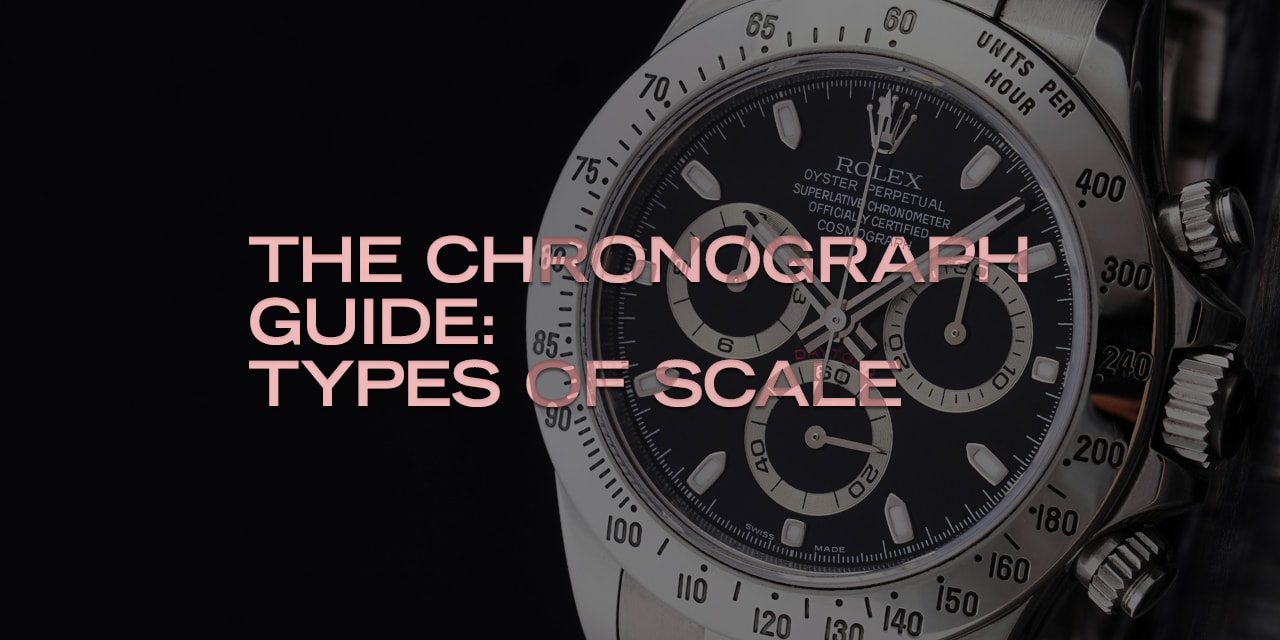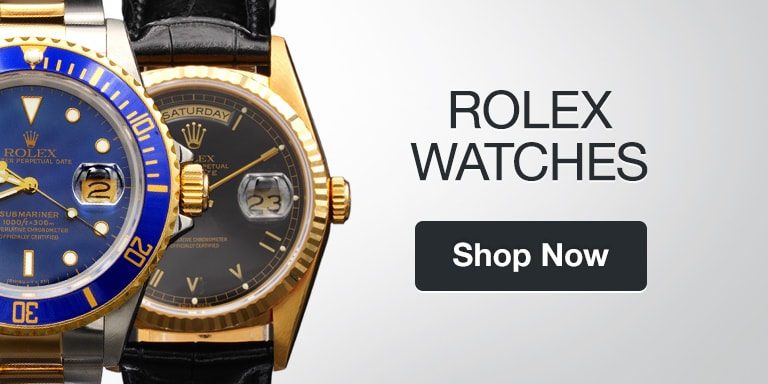The Chronograph Guide: Types of Scale
At their heart, every chronograph does the same thing.
Taking their name from the Greek for ‘time’ (chrono) and ‘writer’ (graph), they are, essentially, models which feature a stopwatch in addition to the standard time telling function, and can be powered by anything from a manually wound mechanical movement through to the latest digital circuitry.
In mechanical watches, the chronograph is one of the simplest and most popular complications and are typically outfitted with two or three sub dials which record elapsed time in seconds, minutes and hours, while a central chrono hand registers fractions of a second. However, what gives each chronograph greater utility, and personality in many ways, is the type of scale it uses.
Found usually around the edge of the dial or engraved onto its bezel, there are a variety of different scales, all of which make use of the chronograph’s time measurements in their own unique way.
Below, we investigate just what these scales are and how they are used.
The Tachymeter
By far the most prevalent meter used on chronographs, the tachymeter dates all the way back to 1836 when it was invented by M. Gaetano Caïro. Its name derived from yet more Greek (‘takhús’=‘swift’ and ‘métron’=’measure’), the first tachymeter scale actually used on a timepiece came about in 1905 when Léon Breitling patented his simplified version on the company’s Vitesse timer. That pocket watch was used soon after by Swiss police to issue the very first speeding ticket to a motorist, so now we know who to thank. Since then, the tachymeter has had a long association with motor racing.
Heuer, one of the earliest pioneers of the chronograph with their invention of the oscillating pinion in 1887, produced the first wristwatch with a tachy scale in 1915, and since then just about every world famous chrono you can name has had one; from Omega’s Speedmaster to Rolex’s Daytona to Heuer’s own Carrera or Autavia.
So, how does it work?
The tachymeter is a logarithmic scale proportional to 1/elapsed time (one over elapsed time), meaning it is used to measure in ‘units per time increments’. Now, those units can be in anything—kph, mph, etc.—so long as they remain consistent.
For instance, imagine you wanted to measure a racing car’s speed over a certain distance. First of all, decide whether you want the information in miles per hour or kilometers per hour; let’s say miles per hour for our example. All you need to do is start your chronograph at a particular point then, using the car’s odometer, stop it again once you have travelled one mile. Alternatively, you could use two outside references if you know they are precisely one mile apart.
You then look at the chrono hand and see the jaunt took you 24-seconds. That aligns with the number 150 on the tachy scale, so your average speed across that mile was 150 mph.
Of course, that data can also be used to calculate distance.
If you know your constant speed, you can measure how far you have travelled by using the tachymeter in reverse. If you’re driving at a steady 70 mph, start your chronograph and stop it again once the central hand hits the number 70 on the scale. You see it took 51-seconds—so, you are travelling one mile every 51-seconds, and from there, if you know how far you have to go until you reach your destination, you can calculate your arrival time.
The average rate of just about any repeating event can be determined with a chronograph’s tachymeter scale; the efficiency of a machine on a production line, the number of deliveries per hour in cricket, swim galas, etc.
But while it may be the most widespread and useful of the scales, it is not the only one.
The Telemeter
By no means common, you will nevertheless find telemetric scales on watches such as Omega’s Speedmaster Chronoscope (along with a tachymeter and Pulsometer), Montblanc’s 1858 Monopusher Chronograph and Patek’s 175th Anniversary Chronograph, the 5975R-001.
Greek is key here again. In this case, the ‘têle’ stands for ‘far away’ (as in telephone and telegram) and so telemeter scales are used to assess how far away something is, using the two known quantities of the speed of light and speed of sound. Effectively, the chronograph measures the time between the wearer seeing something happen and hearing it, and the scale gives the distance.
Telemeters were particularly useful during both World Wars. Soldiers were able to gauge how close they were to, for example, enemy artillery by starting their chronograph when they saw the muzzle flash from their adversary’s cannon, then stopping it again when they heard the report of the guns. Because light travels roughly 880,000 times faster than sound, that time gap could be used to give a good estimation of the opponent’s proximity.
So, if the chronograph read that there were 19-seconds between the visual and audible events, the telemeter tells us the guns are 4-miles away.
Unlike with the tachymeter, however, telemeter scales are not universal. Each one is calibrated for its own units, most commonly miles or kilometers and cannot be used interchangeably.
Happily, you don’t have to enlist to take advantage of a telemeter. Things like judging the distance of a thunderstorm and whether it is approaching or retreating can be done extremely accurately by timing the gap between seeing lightning flash and hearing the thunderclap.
Pulsometer
One of the easiest scales to get your head round, Pulsometers are merely aids for doctors to measure heartrate.
Usually calibrated for either 15 or 30 pulsations, the physician simply locates their patient’s pulse and starts the chronograph. After they have counted the 15 or 30 beats (whichever their model is regulated for) they stop the watch and read off the value indicated by the chrono hand.
So, if the watch is adjusted for 30 pulsations and the patient manages to get through them in just 14-seconds, the Pulsometer gives them a heartrate of about 140bpm and they should probably have a sit down.
Something of a novelty in this day and age, you will still find Pulsometer scales on pieces from A. Lange & Söhne, Jaeger-Le-Coultre, Omega on some of their limited edition and two counter Speedies and, of course, Patek.
Featured Photo: Pexels (cc), BeckerTime’s Archive.








